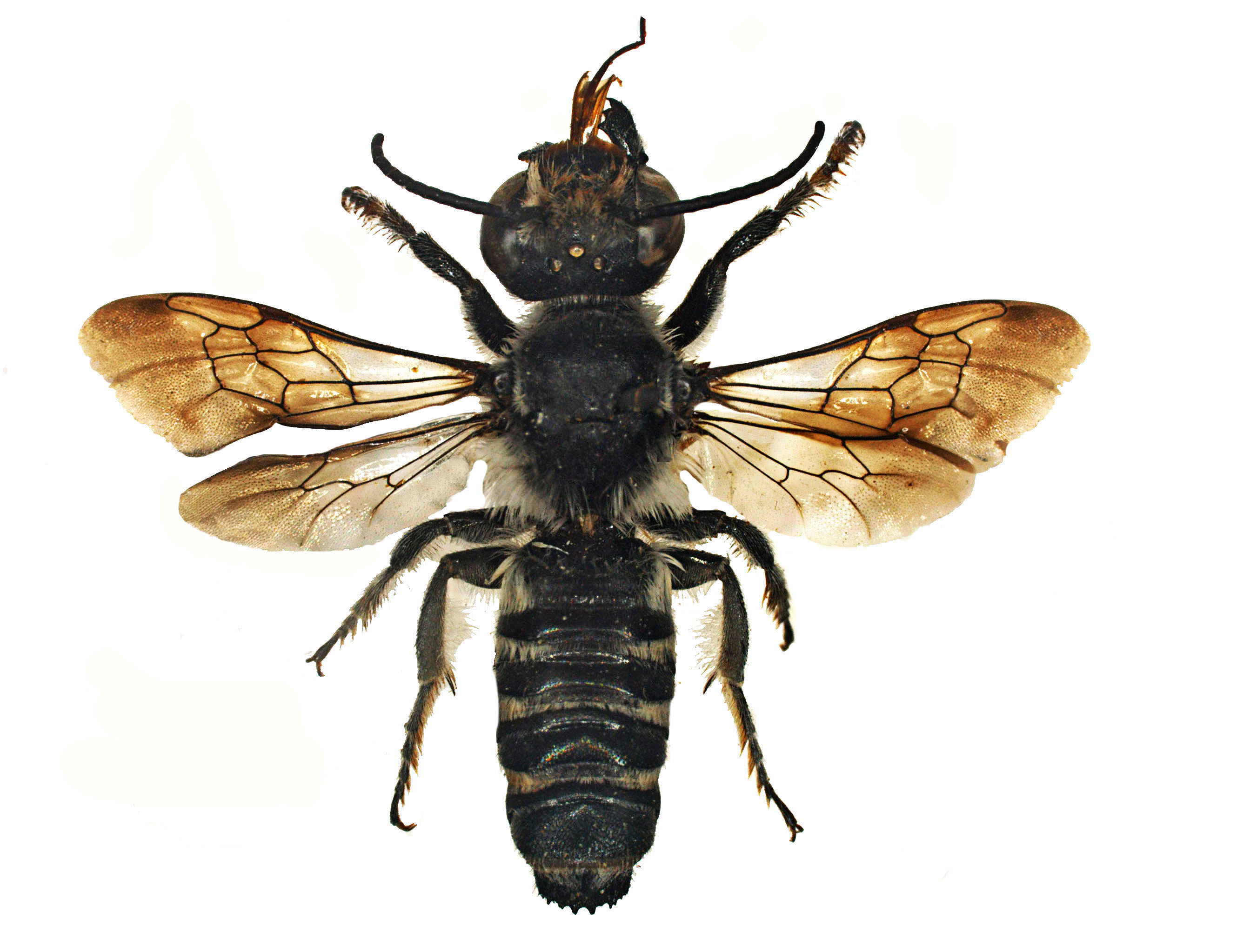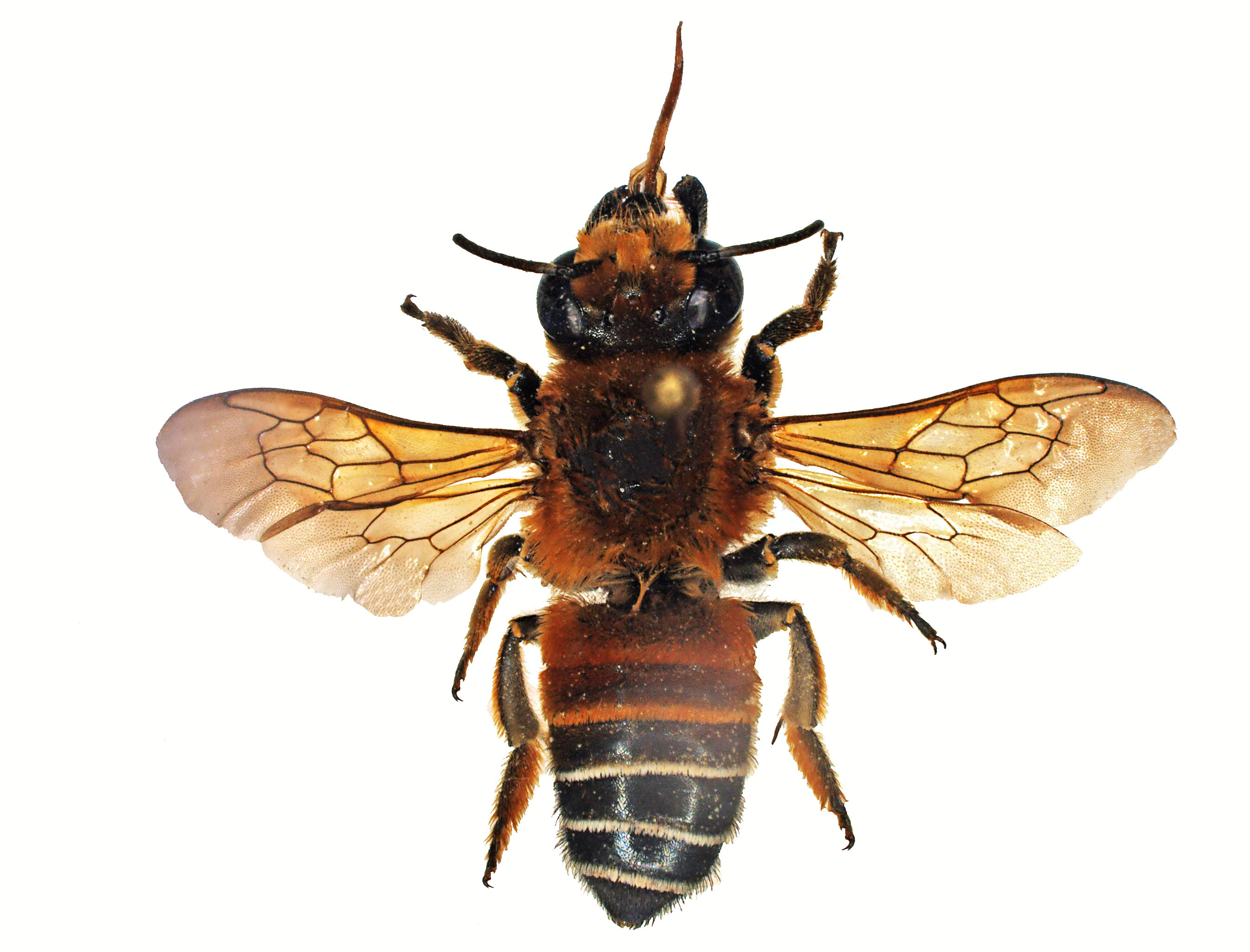Solitary bees are important pollinators. Among these, bees under the family Megachilidae are important pollinators offering their crucial role in the wellbeing of the ecosystem. Megachilidae is a family with approximately 4,000 species found around the world (Ascher & Pickering, 2020; Michener, 2007). Several species of Megachilidae are known as effective pollinators are now farmed and preserved because of their importance in pollinating commercial crops (Batra, 1977). The most common names for megachilid genera are mason bees and leafcutter bees, which refer to the materials used to construct their nest cells (mud or leaves, respectively). Some gather plant or animal fur and fibers are known as carder bees, while some utilize plant resins in nest construction are known as resin bees. Most of the species feed on pollen and nectar, however, few are kleptoparasites (known as "cuckoo bees") that eat pollen gathered by other megachilid bees. Scopa is not seen in parasitic organisms. The taxonomic studies on Indian Megachilidae began with publication of Smith (1853, 1859, 1870, 1875, 1879). Since then numerous research articles have been published on taxonomy and biogeographic distribution of Indian megachilid bee fauna are: Radoszkowski (1882), Bingham (1897), Cameron (1897, 1901,1904, 1907, 1908,1909, 1913), Nurse (1901, 1903, 1904), Friese (1903, 1904, 1914, 1920), Cockerell (1907, 1910, 1911, 1919, 1922), Mavromoustakis (1937, 1948), Michener & Griswold (1994), Baker (1995), Gupta (2003), Kumar Ghorpade (2009) and Ascher & Pickering (2015) who reported 28 genera with 237 species. The Megachilidae database contains list of all the 266 species of Megachilidae found in India along with their valid taxonomic classification, geographical distribution within and outside India with real time distribution maps along with referenced literature.
*** The database is under construction ***

